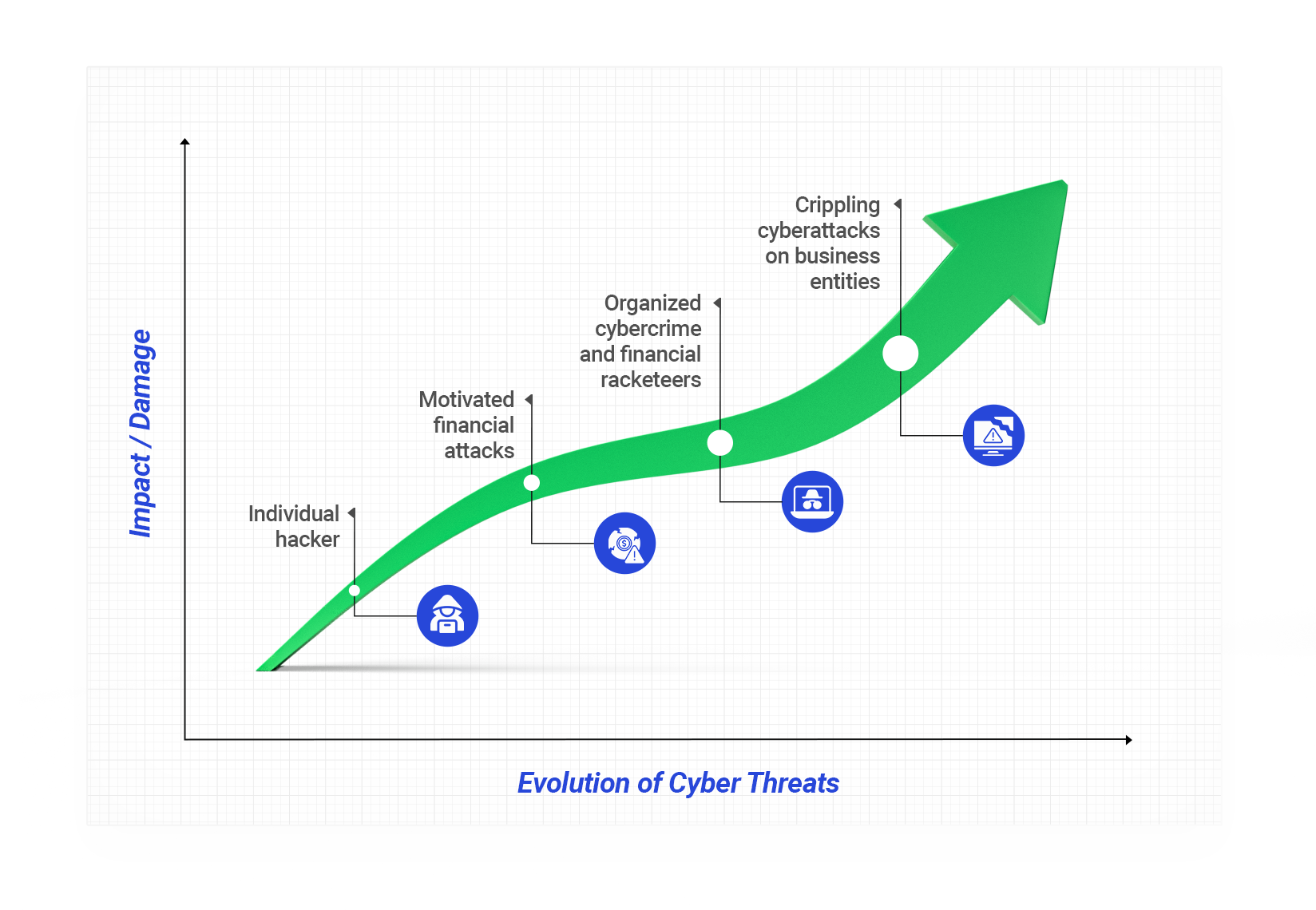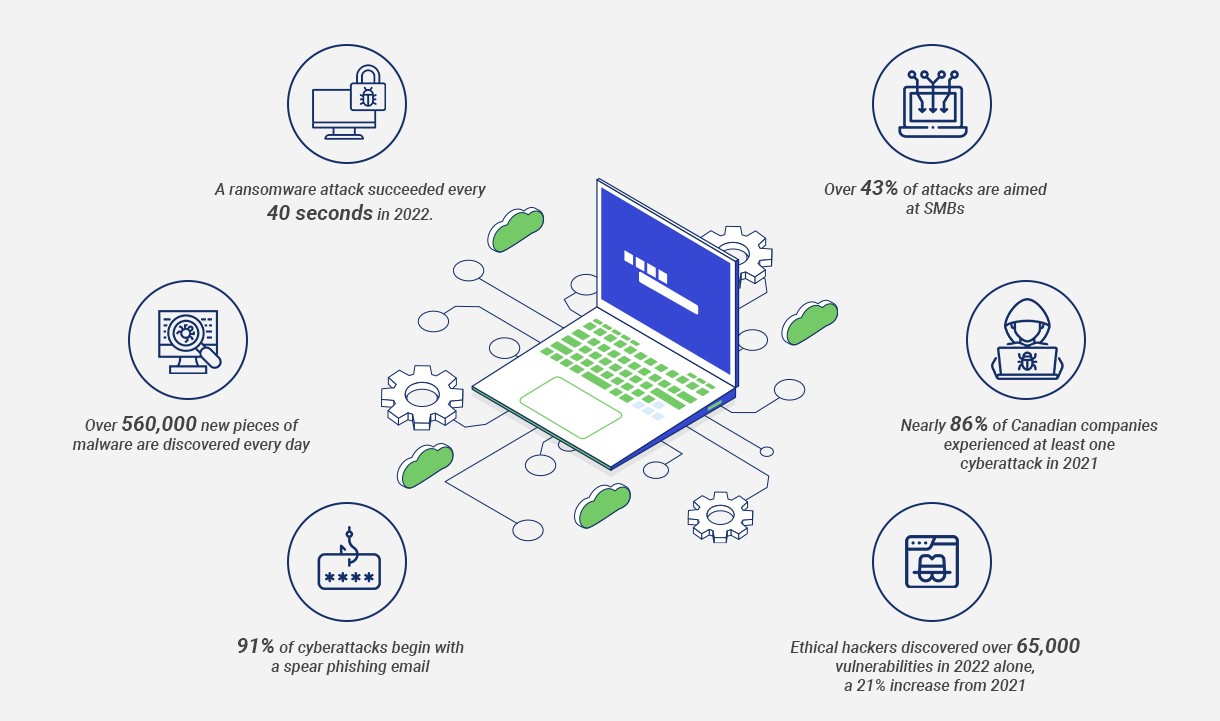As the world becomes more and more interconnected, the threat of cyberattacks continues to grow. Cybercriminals are becoming more sophisticated, and the attacks they launch are becoming more complex and damaging.
Cybercrime has been up 600% since COVID-19
Technology keeps evolving. So does the severity and number of cyberattacks.
Evolution of cyber threats


The early days of cybersecurity
In the early days of computing, cybersecurity was not much of a concern. The primary focus was on developing new technologies and making them work. However, as the use of computers grew, so did the risk of cyberattacks. The first cyberattack was reported in the 1970s when a computer worm was unleashed on ARPANET, the precursor to the internet. This was just the beginning of a long and evolving history of cyber threats.
The rise of malware
In the 1980s, the first malware attacks were launched. Malware is a type of software designed to harm or exploit computer systems. The first malware was relatively simple, but as computing technology became more advanced, so did malware. Today, there are millions of different types of malware, ranging from viruses to trojans to ransomware. During 2022, the worldwide number of malware attacks reached 5.5 billion, a 2% increase compared to the preceding year.


The age of hacktivism
The early 2000s saw the rise of hacktivism. Hacktivism is a form of hacking that is politically or socially motivated. The most famous hacktivist group is Anonymous, which has been launching attacks on various targets over the years. While some hacktivism can be seen as a form of political activism, it can also be incredibly damaging. In 2011, the hacktivist group LulzSec launched a series of high-profile attacks that caused millions of dollars in damage.
State-sponsored cyber attacks
Today, one of the biggest threats in the world of cybersecurity comes from state-sponsored cyberattacks. Nation-states have become increasingly sophisticated in their cyber capabilities, and they are using these capabilities to launch attacks on other nations, organizations, and individuals. These attacks can range from stealing sensitive information to disrupting critical infrastructure.

What the statistics say

The future of cybersecurity
As technology continues to evolve, so will the nature of cyber threats. The Internet of Things (IoT) is one area where cybersecurity experts are particularly concerned. The IoT refers to the growing number of devices that are connected to the internet, from smart thermostats to self-driving cars. These devices are vulnerable to cyber attacks, and if compromised, they could cause widespread damage. In addition, the development of artificial intelligence (AI) is expected to create new cybersecurity challenges.

How to future-proof your business?
As the complexity and number of cyberattacks continue to increase, it can be challenging for organizations to keep up with the latest threats and implement effective security measures on their own. A reputed MSSP like Pathway can help organizations by providing round-the-clock monitoring, threat detection and response, vulnerability assessments, and security awareness training for employees. With the expertise and resources of an MSSP, businesses can ensure that their IT infrastructure is well-protected against a wide range of cyber threats. MSSPs can also help organizations stay up to date with the latest security trends and technologies, enabling them to future-proof their security strategies and stay ahead of emerging threats.

